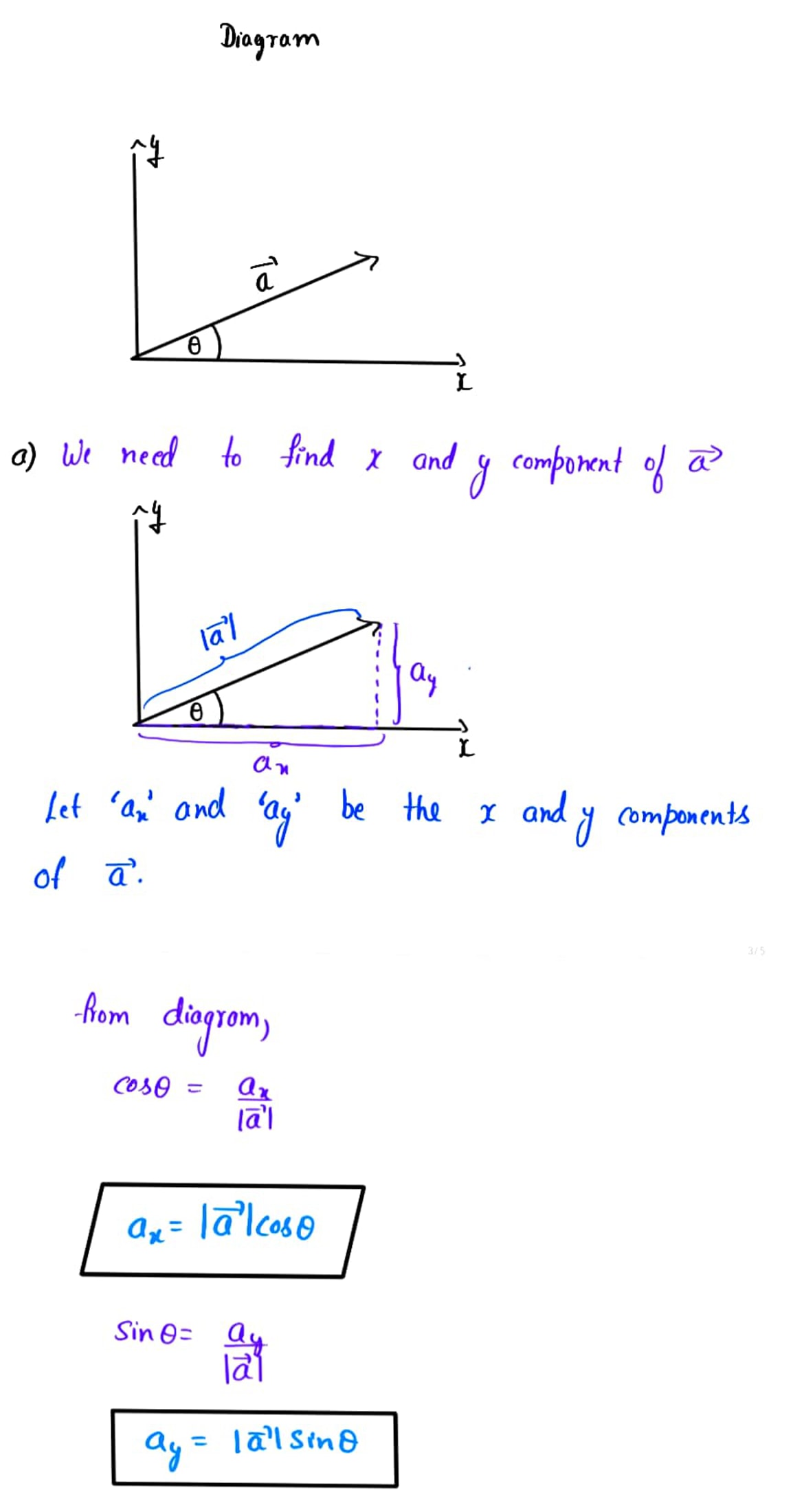Consider the position vector a shown in the diagram below. a makes an angle with the positive x axis, as shown. Notion that 0 (a) Find the x and y components of a. (Leave your answer in terms of a = Tal.) (b) Now consider what happens when the coordinate system is rotated by 90° counter- clockwise, so that the new x'-axis points along the direction of the old y-axis. Find the x' and y' components of a. (That is, find the components of a in the rotated coordinate system.) y' X X' a but
Consider the position vector a shown in the diagram below. a makes an angle with the positive x axis, as shown. Notion that 0 (a) Find the x and y components of a. (Leave your answer in terms of a = Tal.) (b) Now consider what happens when the coordinate system is rotated by 90° counter- clockwise, so that the new x'-axis points along the direction of the old y-axis. Find the x' and y' components of a. (That is, find the components of a in the rotated coordinate system.) y' X X' a but
College Physics
11th Edition
ISBN:9781305952300
Author:Raymond A. Serway, Chris Vuille
Publisher:Raymond A. Serway, Chris Vuille
Chapter1: Units, Trigonometry. And Vectors
Section: Chapter Questions
Problem 1CQ: Estimate the order of magnitude of the length, in meters, of each of the following; (a) a mouse, (b)...
Related questions
Question
please include explanations and work.

Transcribed Image Text:Consider the position vector a shown in the diagram below. a makes an angle with
the positive x axis, as shown.
0
X
Tal.)
(a) Find the x and y components of a. (Leave your answer in terms of a =
(b) Now consider what happens when the coordinate system is rotated by 90° counter-
clockwise, so that the new x'-axis points along the direction of the old y-axis. Find
the x' and y' components of a. (That is, find the components of a in the rotated
coordinate system.)
a
y'
TO
Notice that we have rotated the coordinate system, but not the vector. In other
words, the coordinates (x, y) of vector a in the original reference frame are different
than the coordinates (x', y') in the rotated reference frame. But the vector has not
changed (its length is the same and it still points in the same direction). This is
because a vector exists in the absence of a coordinate system: Any vector is fully
defined by a magnitude (a length) and a direction. The same vector has different
representations in different reference systems.
Expert Solution
Step 1

Step by step
Solved in 2 steps with 2 images

Knowledge Booster
Learn more about
Need a deep-dive on the concept behind this application? Look no further. Learn more about this topic, physics and related others by exploring similar questions and additional content below.Recommended textbooks for you

College Physics
Physics
ISBN:
9781305952300
Author:
Raymond A. Serway, Chris Vuille
Publisher:
Cengage Learning

University Physics (14th Edition)
Physics
ISBN:
9780133969290
Author:
Hugh D. Young, Roger A. Freedman
Publisher:
PEARSON

Introduction To Quantum Mechanics
Physics
ISBN:
9781107189638
Author:
Griffiths, David J., Schroeter, Darrell F.
Publisher:
Cambridge University Press

College Physics
Physics
ISBN:
9781305952300
Author:
Raymond A. Serway, Chris Vuille
Publisher:
Cengage Learning

University Physics (14th Edition)
Physics
ISBN:
9780133969290
Author:
Hugh D. Young, Roger A. Freedman
Publisher:
PEARSON

Introduction To Quantum Mechanics
Physics
ISBN:
9781107189638
Author:
Griffiths, David J., Schroeter, Darrell F.
Publisher:
Cambridge University Press

Physics for Scientists and Engineers
Physics
ISBN:
9781337553278
Author:
Raymond A. Serway, John W. Jewett
Publisher:
Cengage Learning

Lecture- Tutorials for Introductory Astronomy
Physics
ISBN:
9780321820464
Author:
Edward E. Prather, Tim P. Slater, Jeff P. Adams, Gina Brissenden
Publisher:
Addison-Wesley

College Physics: A Strategic Approach (4th Editio…
Physics
ISBN:
9780134609034
Author:
Randall D. Knight (Professor Emeritus), Brian Jones, Stuart Field
Publisher:
PEARSON